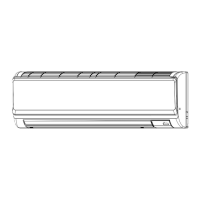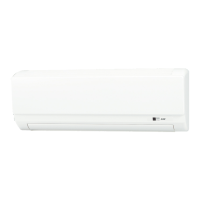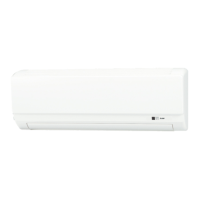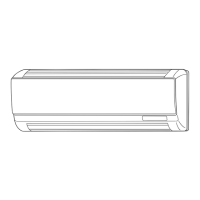
Do you have a question about the Mitsubishi Electric PKFY-P12NHMU-E and is the answer not in the manual?
| Brand | Mitsubishi Electric |
|---|---|
| Model | PKFY-P12NHMU-E |
| Category | Air Conditioner |
| Language | English |
Details the components and functions of the indoor unit.
Explains the functions and displays of the wireless remote.
Provides detailed technical specifications for different models.
Lists electrical components, their symbols, and specifications.
Presents sound level data for various operating conditions.
Shows noise criterion (NC) curves for different models and fan speeds.
Explains the meaning and function of LEDs on the indoor service board.
Details control logic and operation for cooling mode.
Explains control logic and operation for dry mode.
Describes control logic and operation for fan-only mode.
Details control logic and operation for heating mode.
Explains automatic mode change logic between cool and heat.
Provides methods for checking various internal components for faults.
Explains the function of dip switches for mode and setting configurations.
Details how to set addresses and pair remote controllers.
Illustrates test points on circuit boards for diagnostics.
Procedure to detach the lower side of the indoor unit from the mounting plate.
Step-by-step guide to removing the front panel of the unit.
Instructions for removing the main controller and wireless receiver boards.
Steps to remove the electrical box containing wiring and components.
Procedure for removing the nozzle assembly, vane motor, and drain hose.
Instructions for removing the fan motor and fan components.
Steps for removing the vane motor unit and its components.
Procedure for removing the liquid and gas pipe thermistor sensors.
Instructions for removing the heat exchanger and linear expansion valve.
Steps for removing the room temperature thermistor.












